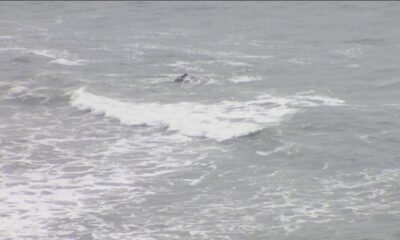arts
Arizona Author Reveals Must-Read Books to Truly Understand the Grand Canyon State

Tom Zoellner, an author with Tucson roots, shares essential reads about Arizona that paint a vivid picture of the Copper State’s rich history and captivating scenery.
ARIZONA, USA — Arizona is a land of breathtaking landscapes and intriguing stories. Numerous authors have ventured to encapsulate its beauty and complexity through their writings. For those short on time or bookshelf space, here’s a curated list of indispensable books that both new and long-time residents should explore.
Arizona: A History, by Thomas Sheridan. This comprehensive history covers significant developments and trends in Arizona. It combines meticulous scholarship with engaging writing, providing a thorough overview of the state’s past.
The Bean Trees, by Barbara Kingsolver. Set in 1980s Tucson, this novel follows a recent migrant from Kentucky who adopts a Native girl. Through this storyline, Kingsolver explores how marginalized individuals find community and support in the chaotic urban Southwest.
Named in Stone and Sky: An Arizona Anthology, edited by Greg McNamee. This collection includes pioneer journals, Native creation stories, and contributions from writers like Ed Abbey. It offers a diverse array of perspectives on Arizona’s history and natural beauty.
A Pima Remembers, by George Webb. Webb provides a poignant autobiography reflecting on life before large-scale agricultural developments altered the Gila River landscape. This work serves as a narrative on the clash between traditional ways and modern advancements.
Laughing Boy, by Oliver LaFarge. Winner of the Pulitzer Prize in 1927, this novel portrays the inner lives and spiritual practices of Native characters. The story is set on the Navajo Nation and culminates in a tragic love story.
Cadillac Desert, by Marc Reisner. Although not exclusive to Arizona, this examination of water management in the West is crucial for understanding how federal policies have reshaped land and politics, particularly in arid regions.
Tertiary History of the Grand Canyon District, by Clarence Dutton. This 1882 government report transformed the perception of the Grand Canyon from a barren chasm to a national treasure. Dutton’s poetic descriptions remain impactful today.
Ocean Power: Poems of the Desert, by Ofelia Zepeda. Zepeda’s poetry captures the essence of desert life on the Tohono O’odham Reservation. Her work vividly describes the natural elements and cultural traditions of the region.
The Trunk Murderess: Winnie Ruth Judd, by Jana Bommersbach. This true crime book delves into the sensational 1930s case of Winnie Ruth Judd, who was tried for a gruesome murder in Phoenix. Bommersbach provides a compelling account of Judd’s life and the broader societal context.
Midnight on the Desert, by J.B. Priestley. English playwright Priestley offers an outsider’s perspective on Arizona’s geology and culture. His observations, made during a winter stay at Remuda Ranch, remain thought-provoking nearly a century later.
The Short, Swift Time of Gods on Earth: The Hohokam Chronicles, edited by Donald Bahr. This work explores the rise and fall of the Hohokam civilization, known for their sophisticated canal systems in the Salt River Valley. It provides valuable insights into this foundational culture through the lens of their descendants.
— Tom Zoellner is the author of nine nonfiction books, including Rim to River: Looking Into the Heart of Arizona.


















